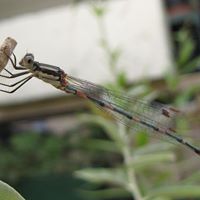What is another name for a young mosquito?
"Mosquito" is a Spanish or Portuguese word meaning "little fly" while 'zancudos' in Spanish, means "long-legged." The use of the word "mosquito" is apparently of North American origin from as early as the 1500's after the colonization of the Spaniards. They are known to transmit serious diseases, including yellow fever, Zika fever, malaria, and dengue.
Mosquitoes are characterized by long, fragile-looking legs and piercing mouth-parts. There are over 3,000 species, world-wide. The eggs are laid on a surface of water and hatch into aquatic larvae, wrigglers or nymphs, which swim with a jerking, wriggling movement. In most species, the young feed on algae and organic debris, although a few are predatory and may even feed on other mosquitoes. Unlike most insects, mosquitoes in the pupal stage, called tumblers, are active and free-swimming. The pupae breathe by means of tubes on the thorax.
Because mosquitoes are such prolific carriers of disease, preventing them from feeding on humans is considered a key global health strategy. Researchers have investigated the possibility of manipulating mosquito populations to prevent the production of viable mosquito offspring, thereby reducing the number of mosquitoes.
Scientists have also identified ways in which male mosquitoes may be genetically engineered to transmit a gene to their offspring that causes the offspring to die before becoming sexually mature.
More Info:
www.britannica.com












